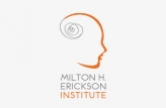CLINICAL CASE REPORT: JACK
Jack is a 30-year-old dentist who encountered difficulties because of his obsessional fear of contamination while performing procedures. He had 2 years of CBT combined with clomipramine. However, he obtained no relief, and indeed, his symptoms worsened. He did not feel he had an adequate affective connection with the therapist. Jack’s dental partner was concerned that Jack’s compulsive behaviors (triple face masks and goggles, multiple layers of gloves, checking practices, excessive rumination about doing certain procedures, spacey appearance) would be dam- aging to their dental practice. He insisted that Jack get more help.
When I began his treatment, Jack produced normal DES, SDQ-20, and SDQ-5 scores in his initial diagnostic interviews. Over a period of months, however, he subsequently endorsed many amnesia items and significant depersonalization and derealization items of the SCID-D. He also described somatosensory flashbacks of “something” in his eye and “blood in the mouth.”
Jack came from a family in which chaos and rage had been prominent features. A grandmother was a notable “worrier,” and his mother had rituals. He reported significant sexual trauma in college but still had no feeling about it. “I can talk about it, but I feel totally nothing when I do.” Jack was placed on fluoxetine, and an emphasis was placed on developing a therapeutic alliance, the introduction of the expectation that he could recover, self-hypnosis, hypnotic ego-strengthening, and cognitive- behavioral interventions such as thought stopping. Once Jack began to experience a small degree of mastery over his response to treatment and to have the expectation that he could recover, ego state exploration was begun. After a year of weekly therapy, his symptoms abated, he became more assertive, and he was able to relax and to enjoy both work and recreation. He achieved certification in his dental specialty, and he left the partnership to establish a solo practice in his subspecialty.
Jack’s wife then left him, and he was able to cope with this appropriately. During the second year of his treatment, his symptoms and flashbacks gradually vanished, and Jack became completely free of ruminations and compulsive behaviors. He then saw me twice a year for “checkups.” Three years later, he remains symptom free. Because of the strong familial element to Jack’s symptoms, we decided that he should remain on fluoxetine.
Jack’s treatment was geared to improving his response to therapeutic interventions. Although he had received treatments shown to be efficacious in his previous therapy (clomipramine and CBT), they had not helped him. Luborsky, McLelen, Diguer, Woody, and Seligman (1997) in comparisons of 22 therapists across 7 patient samples found that identical manualized and strictly controlled treatment applications yielded results that varied strongly. To this end, effectiveness factors such as working to create a therapeutic partnership and offering Jack hope that he could recover may have been vital to his improvement. Another deficiency in his previous therapy was the failure to try other, more efficacious medications or medication combinations (Pato & Zohar, 2001).
The Stage I work (Ginandes, 2002; Phillips & Frederick, 1995) also included efficacy-based interventions (medication and CBT). The stabilization and symptom improvement gave Jack hope that his treatment was working. The Stage II (Ginandes) work introduced hypnoanalysis and expanded into resolution of Jack’s dissociative symptoms. Psycho- therapy and maintenance medication (directed at genetic factors) have produced enduring relief from the symptoms of OCD.
There is no need for efficacy and effectiveness to be exclusive of one another. It is recommended that research be conducted into their respective roles in the treatment of the extremely complex clinical syndrome known as OCD. It is possible that, especially with refractory cases, efficacious treatments are not able to work with certain patients when effectiveness factors are absent. The path to the discovery of efficacy-based treatments for OCD stretches into the future as a long and complicated one.
Claire Frederick (2007), Hypnotically Facilitated Treatment of Obsessive-Compulsive Disorder: Can it Be Evidence-Based? International Journal of Clinical and Experimental Hypnosis, 55(2): 189–206, 2007.

